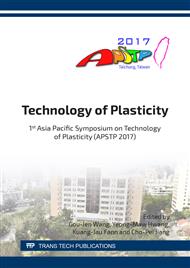p.114
p.120
p.126
p.132
p.141
p.149
p.155
p.161
p.169
Evolution of White Layer during Wire-Cutting and Comparison of Several Methods to Improve Surface Integrity for Fineblanking Tools
Abstract:
Powder metallurgical high speed steel (such as S390) has superior mechanical properties and been used as fineblanking tools. The electrical discharge machining has been widely used for cutting fine blanking tools which are made of especially hard tool steels. Whereas, its thermal nature causes great concerns regarding surface integrity, which matters a lot to tool life. In the present study, the evolution of surface integrity of the S390 with multi-cutting is comprehensively compared. The result shows that the surface roughness, white layer thickness and surface residual stress decrease with the increase of cutting pass. Additionally, the effectiveness to remove white layer on HSS S390 by manual and towed polishing and electrolytic polishing are compared. At last, a device of abrasive water jet polishing is designated to remove the white layer resulted from wire-cutting.
Info:
Periodical:
Pages:
141-148
Citation:
Online since:
April 2018
Authors:
Price:
Сopyright:
© 2018 Trans Tech Publications Ltd. All Rights Reserved
Share:
Citation:


